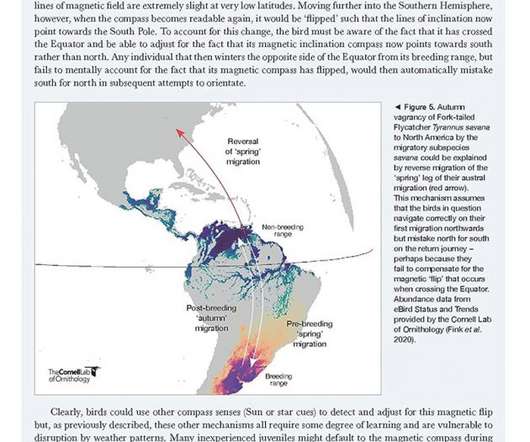Vagrancy in Birds: A Book Review
10,000 Birds
APRIL 5, 2022
per cent of individuals of a species at a given time” and a vagrant bird as a bird that shows up outside of this range (p. There are many more factors than I imagined: compass errors, wind drift, overshooting, extreme weather and irruptions, natural dispersal, and human-driven vagrancy. other compass senses like the stars?–and
















Let's personalize your content